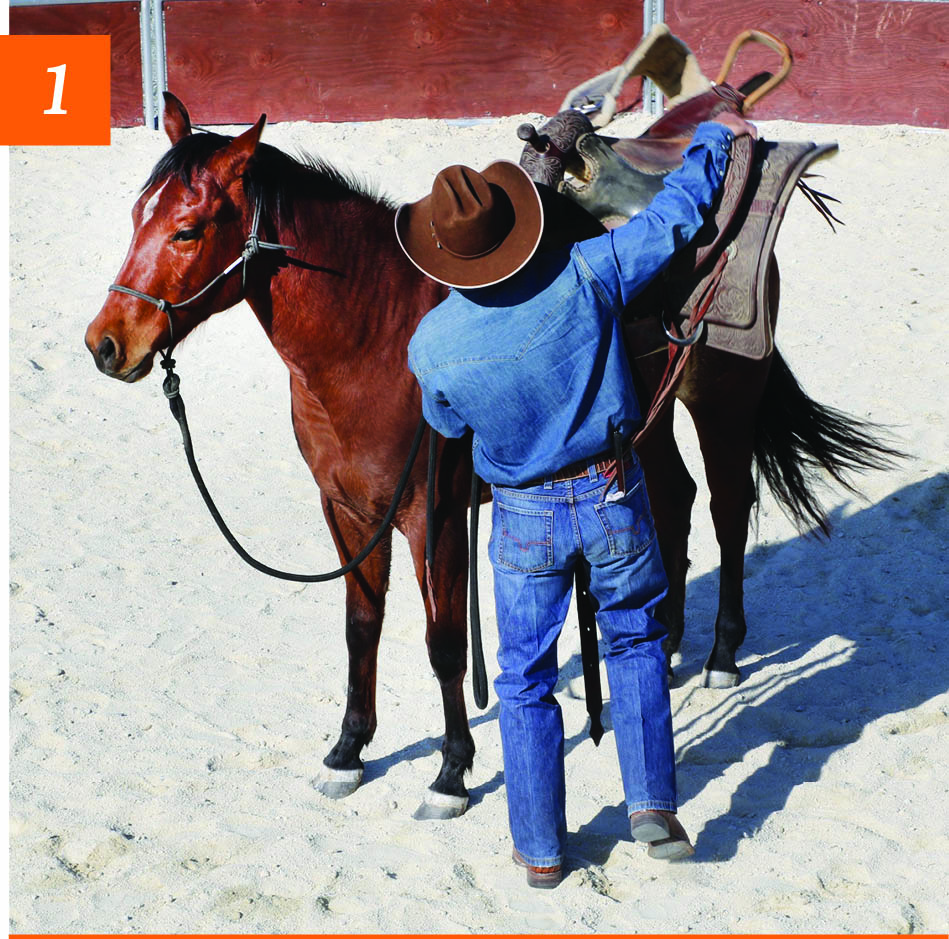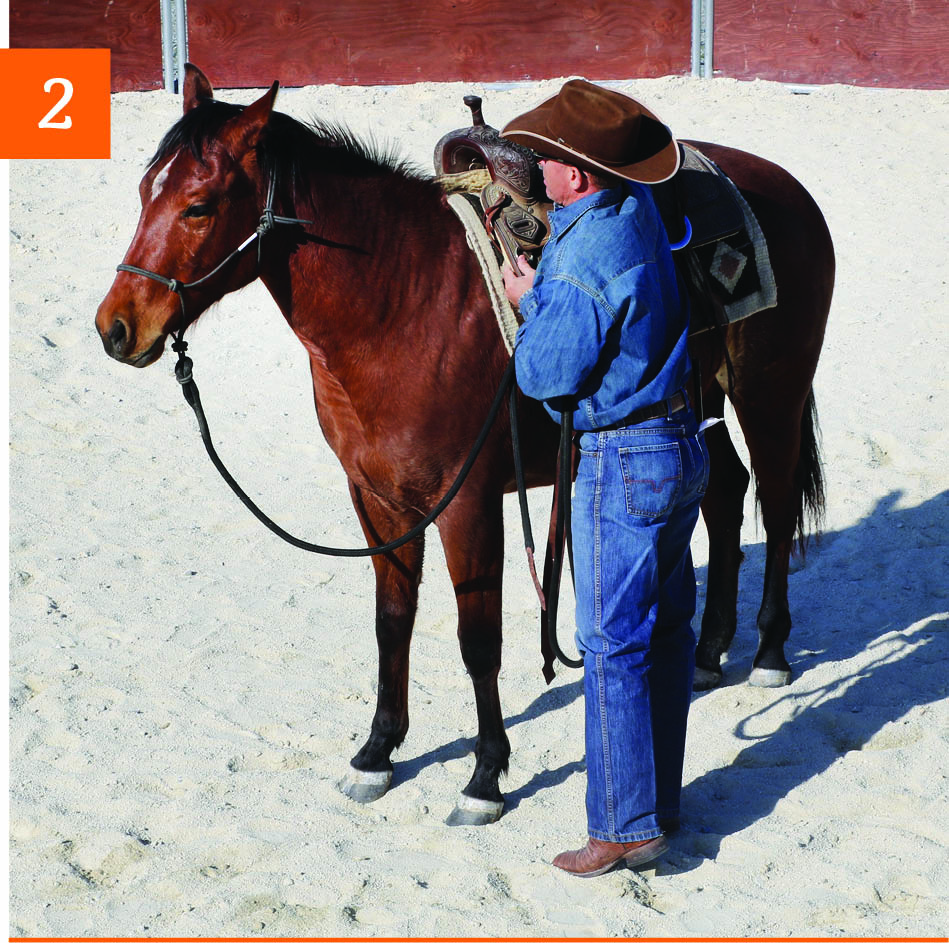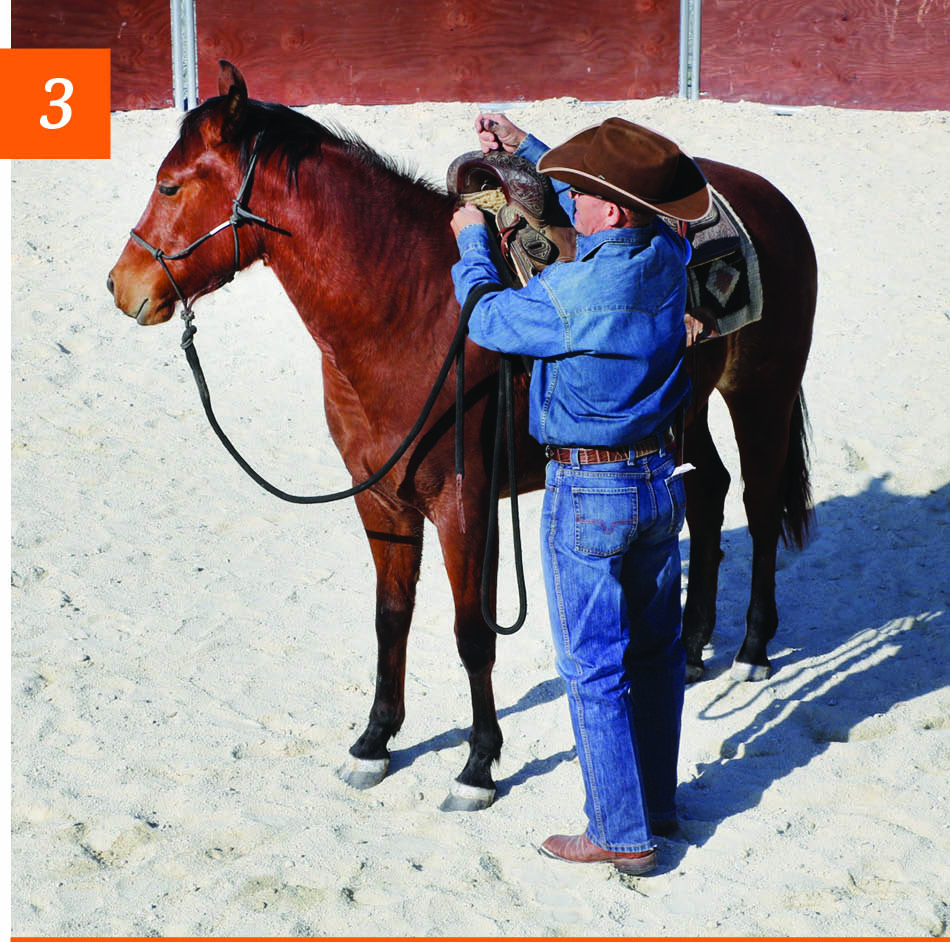Saddling a nervous horse? Use mindful pauses to give him a chance to change his focus and accept the process willingly.
When your horse feels uncertain about what you’re asking of him, it’s essential to stay keenly observant. Being aware of his subtle indications of discomfort is an excellent way to avoid a wreck plus lay down learning that will serve you well in the future.
So when you’re saddling a nervous horse, slow down and give that horse time to calmly accept what you’re asking of him. It might be a young horse worried about his first saddling, or an older horse with some other reason to feel uneasy about the tacking-up process.
Either way, I’m going to show you how to observe your horse’s responses closely, so you can know what to look for, when to pause, and how to give him a chance to change his focus and regain calm.
How It Works
Horses have something I call stress indicators, and you ignore them at your peril.
For example, many young horses appear on the surface to be fine during their first saddling. But then, when you ask them to move off, they ignite in an explosion that seems to come out of nowhere. In reality, that explosion was the result of a subtle and gradual build-up of tension.
If you can detect the first indication of tension and resolve it at that point, it doesn’t build up. That’s how you get off to a positive start with a feely type of horse, while conducting a lesson that leaves him feeling calm and reassured.
So how do you accomplish this? By keeping a careful watch on his ears, eyes, and head position. You’re looking for the first sign that he’s fixing his focus, which indicates his tension is building.
It’s similar to when you’re out on a trail ride, and your horse spots something that alarms him. His head comes up and he freezes. His ears flick forward, and he stares at whatever has caught his attention, sometimes breathlessly. He’s rigidly focused.
How to Watch-and-Pause
So how to apply this information to saddling? Well, if you bring the saddle pad near and your horse’s head goes up a half inch and/or his ears flip back in alarm, that’s your first sign. Don’t ignore it and plow ahead. Instead, stop and wait a moment, watching for anything that indicates your horse has changed his focus and is feeling better.
For example, a good sign would be his eyes blinking. (Blinking slows down when horses are anxious.) Or he might lower his head. Or, if his ears were nervously back, one might flick forward. Or he might heave a sigh.
Any of these signs indicate a change—that is, he’s no longer rigidly focused—and you can go ahead and proceed slowly, still observing his reactions. If he shows tension again, back off again for a moment, allow him to settle and refocus, then proceed.
What you’re doing is staying below his threshold of alarm. When you do that, there’s no build-up of tension.
I’ll show you what I mean with this filly in the photos. She’s sensitive and tends to get spooky. With the old, keep-pressure-on approach, she would’ve been difficult—girthy and probably bucking.
But with the watch-and-pause method, she doesn’t have a chance to get upset.
Let’s have a look.
1. Filly Shows Signs of Tension

As I begin to swing the saddle up, the filly’s head raises and her ears swivel backwards. This tells me that she’s now nervous about what’s going on—the start of her rising tension. I must decide very shortly how to address it so it doesn’t continue to build.
2. She’s Still Not Sure

With the saddle in place, she’s still not comfortable about it, and here’s where I can pause and give her a chance to refocus. If I were instead to go around, drop the cinch down, come back around, reach under for the cinch, and start to do it up, each part of that would add to the tension she already has, and at some point she would react.
Instead, I wait, letting her realize I’ve noticed her discomfort and am giving her a chance to feel better. It may take just a few moments or perhaps several, but eventually she’ll relax.
3. Her Focus Changes

And here you can see she’s feeling better about everything and has shifted her focus. Her right ear has flicked more forward, and she’s looking away from the action.
At this point, if you’re really dotting your i’s and crossing your t’s, you could pull the saddle off again as a reward, wait a moment, then resume saddling. That really cements the learning.
Or, depending on the individual horse, you might just pause a moment with the saddle in place, then continue until you see another “freeze,” indicating a return to a nervous focus on what you’re doing.
At that point you’d pause again and just wait for another change in focus.
When the horse begins to realize you’re being that attentive and staying below his threshold of alarm, it becomes easier and easier for him to trust you and go along with what you ask.






